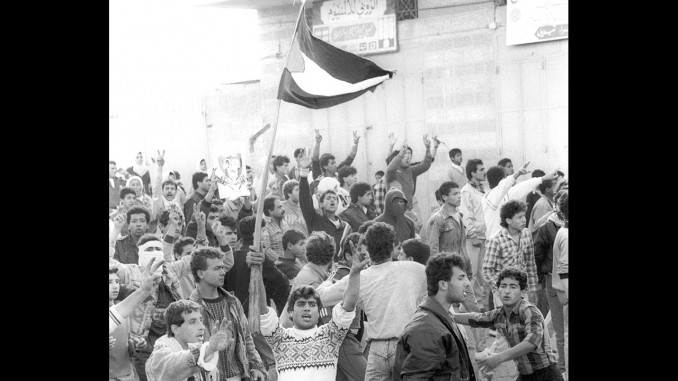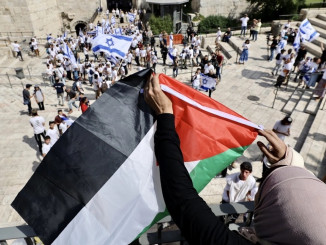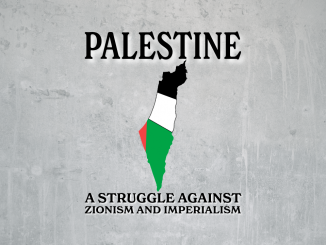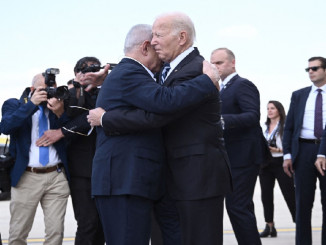
December 1982 seemed like the beginning of a turning point in Palestinian history.
In 1982, it seemed that the fortunes of the Palestinian people were at a low point. After decades of Zionist intrusion from the late 19th century on, the 1947 United Nations Partition, the earth-shattering 1948 Nakba (the mass displacement and dispossession of Palestinians from their homes), the losses of the 1967 War, and finally the failed invasion of Lebanon that led to the near total destruction of the Palestinian Liberation Organization (PLO), it seemed that the hopes of the Palestinian people for relief from their loss and oppression would never be realized. PLO leaders in Tunis were isolated and their forces diminished. Egypt led the way as other Arab states explored relationships and agreements with the U.S. It seemed that the Palestinians were abandoned, disarmed, and had no prospects to assert themselves against the occupation.
But at this seemingly low point, it was the Palestinian people themselves in the Occupied Territories who would shift the balance of forces in the region, and who would begin the struggle anew to free themselves from the yoke of Israeli domination.
By 1982 a new generation had grown up under occupation, frustrated by its conditions, full of frustrated energy and anger against Israel and the occupation. By the mid-1980s, 40 percent of Palestinian workers had second-class jobs in Israel, in construction or service industries. Others worked marginally as teachers, cab drivers, and in other services in the West Bank and Gaza. Unemployment was rampant, and frustrations grew intense as many more Palestinians focused on seeking to better their lives through education in the Palestinian university system. In 1987, only one in eight college-educated Palestinians could find work in their field.
Outside of building support for the armed struggle, the PLO had neglected organizing in the Occupied Territories. It was the Communist Party of Palestine that led the way in Gaza and the West Bank, organizing volunteer work brigades to encourage and help farmers and unions to contest the daily conditions under which they struggled. Seeing the success of these activities, the PLO parties took up similar organizing efforts, and the Occupied Territories saw the growth of grassroots activism. However, neither the PLO and its parties, nor the Communist Party (which officially supported the PLO), saw this grassroots activity as anything but a support for the armed struggle led from exile.
In 1987 everything changed. Palestinians in the Occupied Territories launched a mass uprising against Israel and the military occupation. This uprising was known as the Intifada, Arabic for “shaking off.” What sparked the uprising is still up for debate, but certainly it was a result of the occupation – the arbitrary violence of the Israeli military and the encroachment of settlers on Palestinian land.
The Intifada was a youth-led rebellion. The generation who had grown up knowing nothing except the occupation had reached a breaking point. Their actions, confronting heavily armed Israeli soldiers with rocks and slings, became the symbol of revolt for the entire people.
The leadership of the Intifada was formed by committees composed of militants from the different political parties. The leadership of the different committees was assembled in the Unified National Leadership of the Uprising. As the movement developed, the national leadership gave its strategic orders – when and where to demonstrate, with what slogans, while local committees distributed leaflets, organized people to turn out, and worked to maintain food and supplies for the community in the face of Israeli repression. For nearly five years, the population supported and largely participated in numerous well-organized strikes, boycotts, school closings, and other acts of civil disobedience.
The Intifada’s mass action and mass support completely confounded the Israelis. The entire population of the Occupied Territories was mobilized in its own name, and everyone from the youngest child to their grandparents and great grandparents were participants. Israel’s extensive network of spies and compromised individuals dissolved. The leadership of the Uprising gave informers 24 hours to admit what they had done at a mosque or church, and the people would know their crimes, then forgive them.
The Israeli military attempted to squash the uprising. The borders of the Occupied Territories were shut off and people who had worked in Israel were no longer allowed to enter. During this First Intifada, 1,284 Palestinians were killed by the Israeli military, including more than 300 children. Hundreds were deported from the Occupied Territories and thousands had their homes torn down. In spite of the repression, the mobilized population remained steadfast. Israeli officials began to consider that the First Intifada made continuing the direct military occupation of Palestine an impossibility, or at least undesirable. In doing so, in just a few short years, the Intifada had achieved more than the guerilla struggle had in decades.
After nearly five years of the uprising, the Israeli Defense Forces of course killed and wounded many more Palestinians than their own forces suffered. The momentum gradually declined, and the PLO used the rising to reinvigorate itself as an organization and to demand face-to-face talks, for the first time, with Israel and other nations in the region.
Although the First Intifada did not succeed in ridding the Palestinians of Israeli domination, it did point to the way out. It was the first mass rising of Palestinian people since the late 1930s, and it challenged the power of both Israel and the so-called Palestinian leaders and representatives. Its mass energy and organization made it a model for what could be done when the working people of Palestine organized themselves and fought back.




